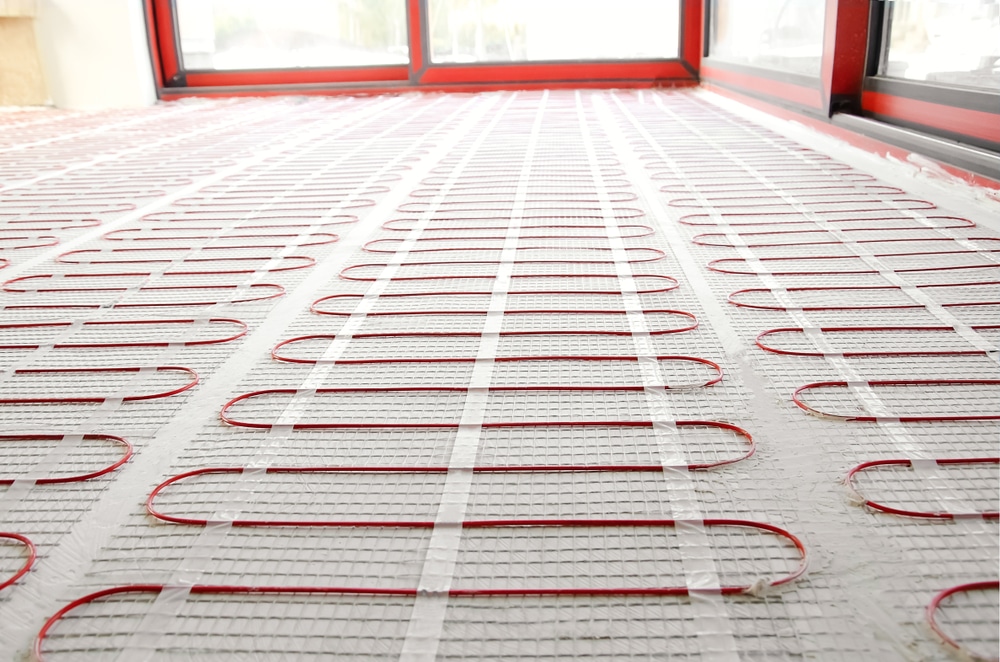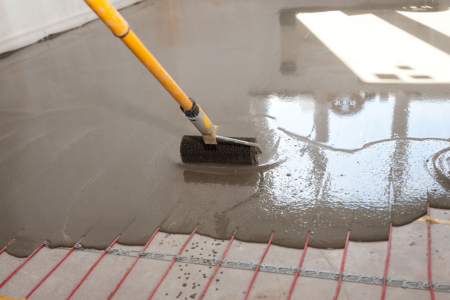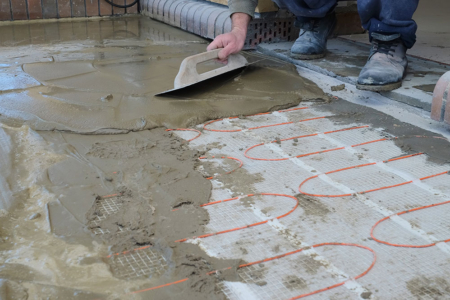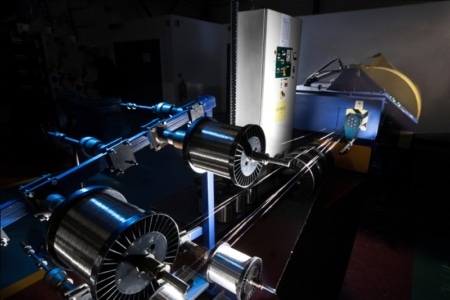When it comes to heating your business premises, there are a range of options available. You could go for a gas-fired water system, an electric one, or even choose to heat the building using renewable energy sources such as solar panels or ground source heat pumps utilising renewably sourced electricity.
In this article, we're going to take a look at electric underfloor heating for large areas - what it is, how it works, and some of the benefits that it can offer compared with other forms of heating.
Electric Underfloor Heating For Large Areas: Pros, Cons, Costs and More
By Stephen Holt, Technical Manager since 1996
What is Electric Underfloor Heating?
Electric UFH is a system using heating cables containing electrical resistance wires laid into the floor of a room or building. The cables can be incorporated into mats, which are then rolled out across the room, or laid as single cables into pre-slotted formers. These heaters are then covered in a thin layer of screed or tile adhesive before being topped with the floor finish. This type of system can be used to heat businesses and is becoming an increasingly popular choice due to the many advantages that it offers.
Each section of heated floor can be controlled by an individual thermostat and the cables can be laid only in those areas requiring heat. The warmth from underfloor heating rises gently, creating a comfortable warm environment without severe airflows or aggressive hot radiators.
The alternate underfloor heating system is known as a ‘wet’ system, where water pipes are laid across the sub-floor and these are then covered in screed and topped with the floor finish. The water is heated by a boiler in a similar fashion to traditional water radiator heating.
Can electric underfloor heating replace radiators? Yes! It can be used as the primary heating source for a building.
Electric Underfloor Heating Pros and Cons
Like any type of heating system, electric underfloor heating has both its pros and cons. Let's consider some of these key advantages and disadvantages:
Pros:
- 100% efficient (or very nearly). Nearly all the electrical energy put into the cable is turned into heat; but it is important to ensure that underneath the heating cables is well thermally insulated so that the heat travels upwards, into the room, and not down into the ground (known as “downward heat loss”).
- Easy to install, but it must be installed by a qualified professional to eliminate the risk of electric shocks.
- Installation of electric heating only requires connection to the electricity mains compared with installing a new boiler for a wet system which is both more expensive and takes longer.
- Thinner overall floor thickness when compared with underfloor piped water systems. Some systems, especially those suitable for renovations, can be very thin, with a minimal increase in the floor height after installation.
- They allow you to easily control your heating – electric underfloor systems heat up quicker than water underfloor systems and each circuit can be controlled individually using a thermostatic switch without a complex manifold and valve system that would be necessary to do this with water. To use the EFH efficiently, it should also be connected to a timer to switch the system off, or down when the building is not occupied.
- Single cable electric underfloor heating can be laid with different spacings in different areas so the heating effect can be tuned to the configuration of the space to be heated and the amount of power needed in each area.
- If the electricity used is renewable then running an electric heating system is carbon zero; The manufacture of the cables will still emit carbon, unfortunately.
Cons:
- More expensive to run – although electric systems are nearly 100% efficient, electricity is still currently much more expensive than gas used for heating water systems. Water systems could also utilise heat pump boilers which run on electricity but are 300-400% efficient, but the installation costs of a heat pump are much greater.
- May affect what is put into a room – flat-bottomed furniture, thick carpets, and rugs should not be put over electric heating cables as they can cause them to overheat.
- If installing heating over a very large area, it may be necessary to upgrade the electricity supply to the property which can be both expensive and logistically difficult.
- Use in high-ceilinged warehousing can be inefficient – the warm air will rise to the top of the building, although de-stratification fans can be used to blow the hot air back down to the floor level.
Safety and Comfort
Underfloor heating provides heating safely and comfortably. There are no hot radiators which can be a source of burns as they need to run at high temperatures to heat a room. The absence of radiators can also be an advantage in corridors or where the room needs to have no fixtures that can either be bumped into or vandalised.
Underfloor heating, because there are no hot and cold spots, also creates the feeling of warmth at a lower room air temperature which reduces the energy demand required to heat the space.
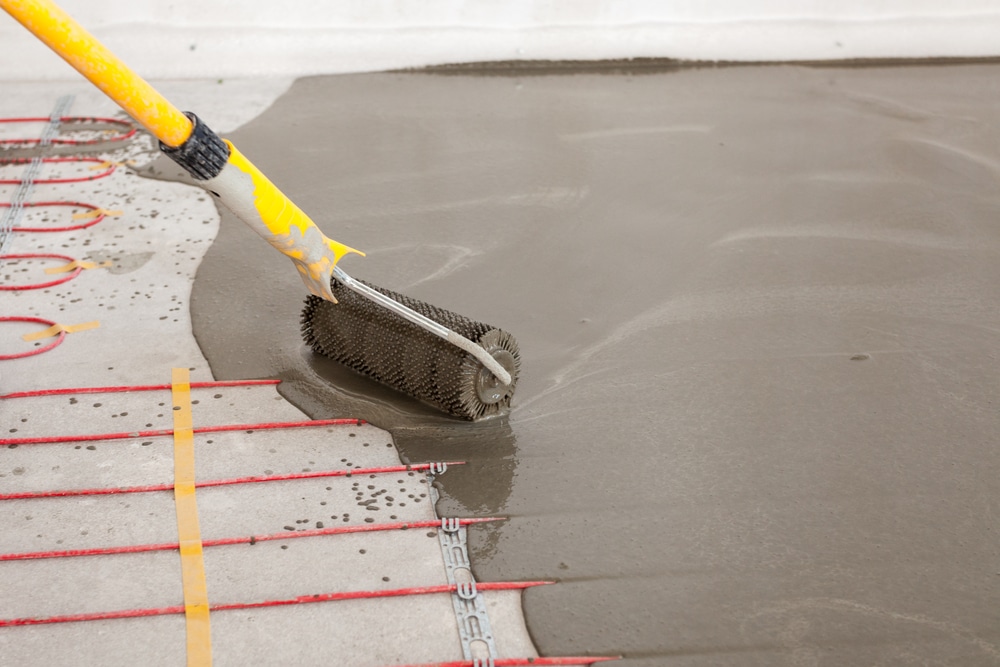
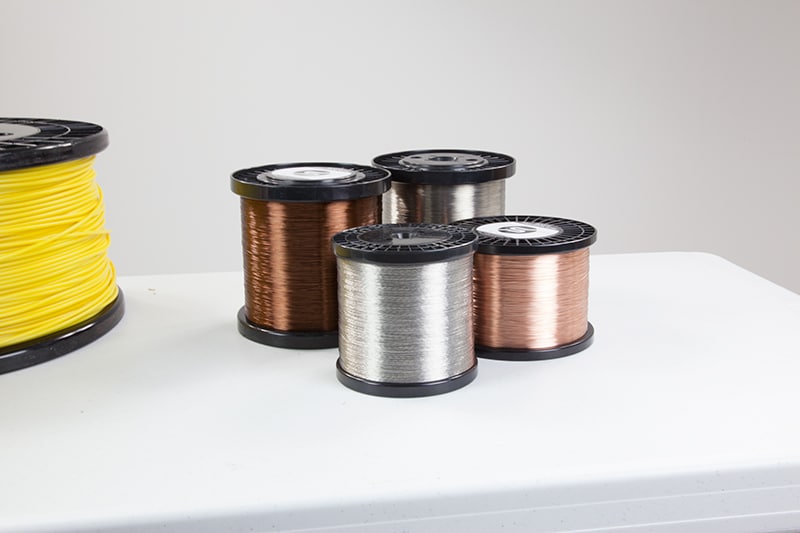
Cost of Installation
The cost of installing electric underfloor heating is significantly less than wet underfloor heating. Wet systems require a boiler to heat the water rather than simply connecting the electric cable to the mains. They are also thinner as the water pipes required in wet systems are larger than the heating cables.
However, the more insulation laid under the heater the better. You do not want heat to flow down into the ground so skimping on insulation cost is not advisable.
Installing electric underfloor heating during construction is, of course, much cheaper. Electric underfloor heating can also be used outside to prevent ice from forming on ramps or steps in colder climates. Special cables can be incorporated into the concrete during their construction.
Time for Installation
Electric underfloor heating can be installed relatively quickly, but time must be allowed for each layer in the system to set or settle.
A typical floor build-up starts with the original floor substrate, adding additional layers as follows:
- Flexible adhesive;
- Insulation board;
- Heating cable;
- Flexible adhesive;
- Waterproof membrane;
- Flexible adhesive;
- Flooring top layer.
As this is all going to be subjected to heat when the system is activated, 24 hours should be allowed for each curable layer to set before the next layer is applied.
Once complete the system should be activated gently to prevent cracking. Your installer will be able to advise on how to commission the heating system once it is installed.
Scott Precision Wire resistance wires are found in many underfloor heating cables across the globe and we remain a key supplier of quality, specialised conductors for the heating cable market.
Get in touch today to find out more.
